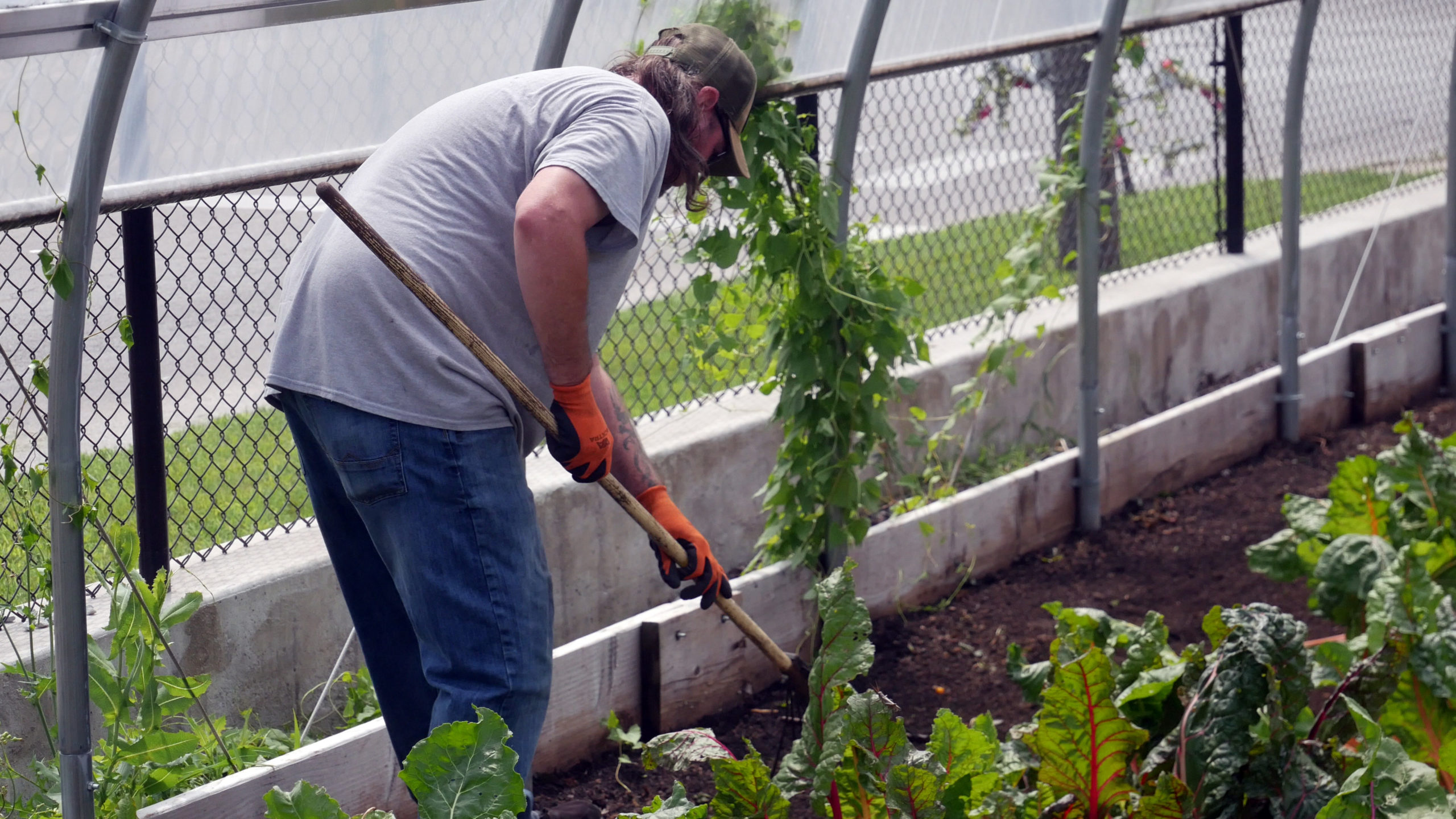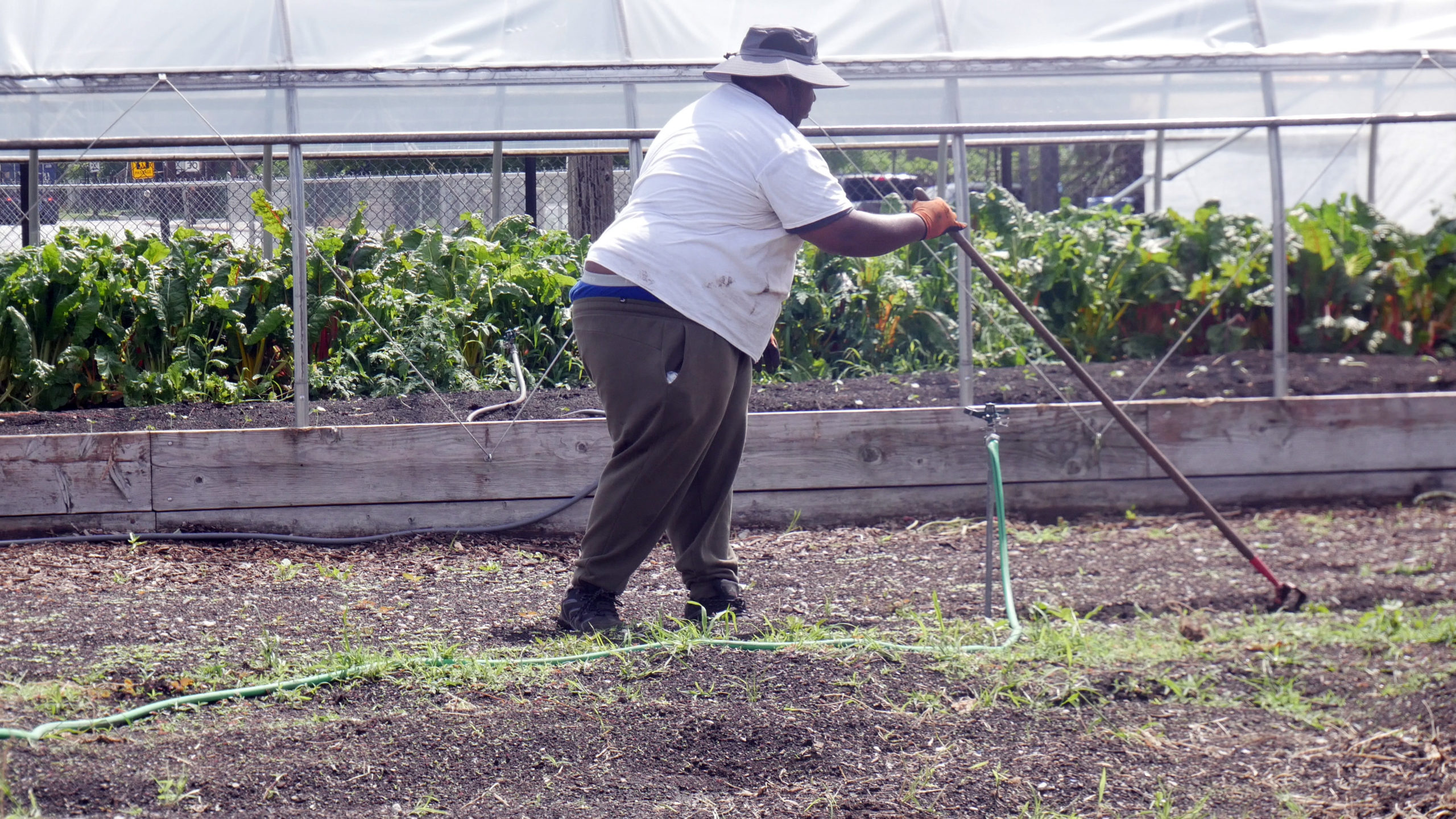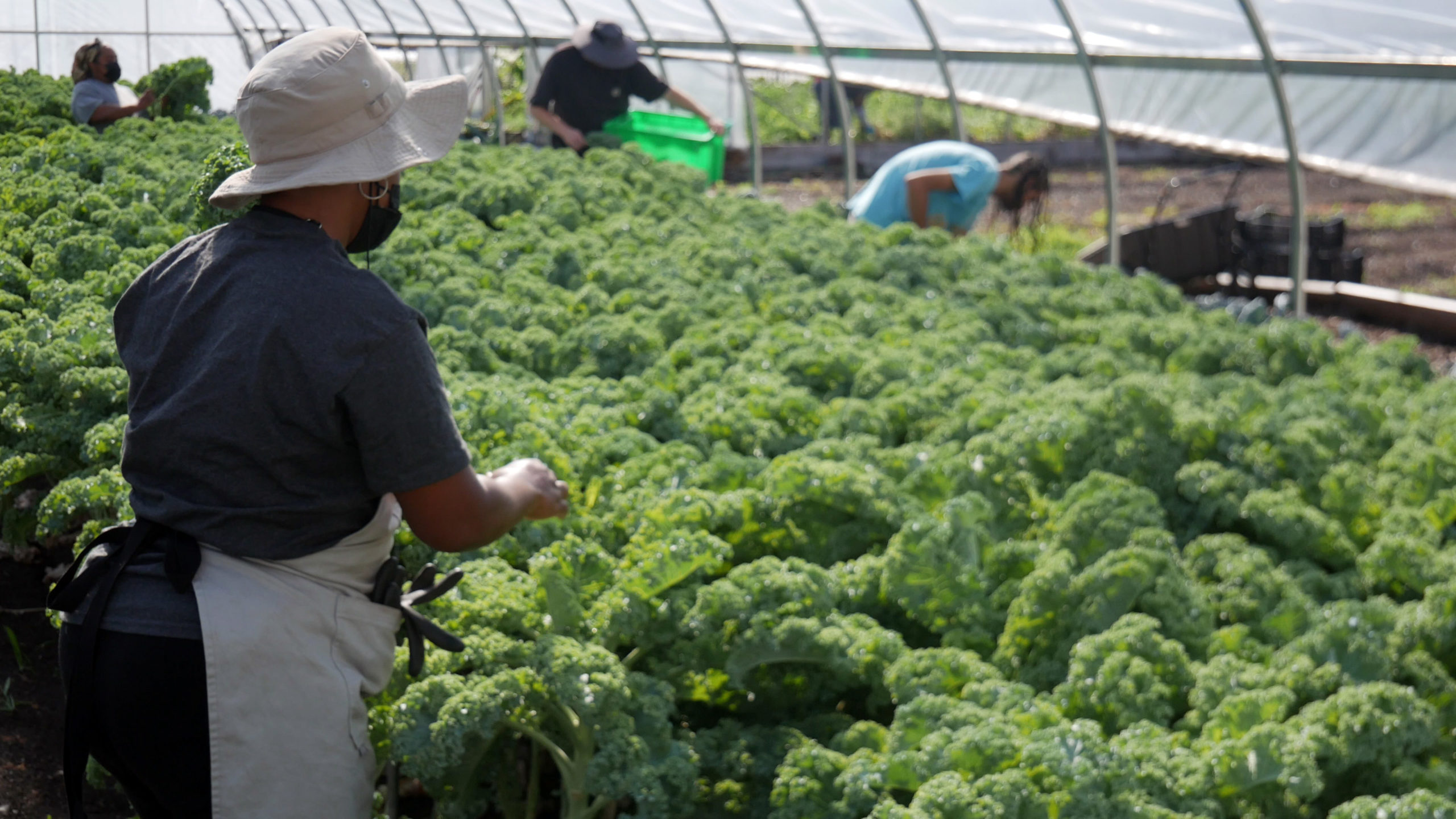
Enjoy this Farming Tips & Tricks Blog Post by our Farm and Program Coordinator, Ezra Lee!
During the beginning of August, farmers and production assistants have put extra focus on preparing beds for the next round of crops. The deeper into summer we run, the more we think about bed turnover and timing for later in the season. The cyclical nature of most small farms is governed by the seasons of course, but also the goal of using as much of our space for as much of the year.

Cohort 3 Production Assistants learn all processes on the farm, from preparing the beds here to packaging for sales.
Throughout the year, it’s not uncommon for a bed to have anywhere between two and four different crops or rounds of crops grown in that space. Just this week we replaced a planting which had been mustard greens with the next round of beets and carrots and filled in a bed previously hosting kale with a mix of radishes. Continually replacing crops in the beds takes some planning and some learning along the way as each season bears new information about the strengths and weaknesses of various locations.
While it may be tempting to replant carrots in the same hoop house as the year prior, because their yield was exceptional, it’s hardly advisable to do so. In fact, we intentionally rotate crops through different areas of the farm and keep track of the planting cycles. This allows the soil to rest from heavy feeder crops which typically bear fruit (think tomatoes, peppers, and eggplants), while still remaining productive through the growth of leafy greens, legumes, roots, and more.

Look at the beautiful kale growing! Production Assistants throughout the summer helped us seed, weed, grow – and now harvest – these beds of greens.

Cohort 3 Production Assistant helping prep the bed for its next planting in our hoop house. These skills require attention to detail that are very helpful in other employment roles as well.
TIPS FOR GROWING AT HOME
Even on a small scale it can be helpful to pay attention to where crops do well and why so that you can adjust your garden and continue to grow beautiful crops. The soil can’t rotate, but the crops can and you can try to mimic the prime conditions of a certain patch in other places by adding shade or adjusting your watering schedule. It may be hard to see this over the course of a singular year, but it makes for an opportunity for longer teaching and new discovery when we have partners and production assistants return to visit annually.
